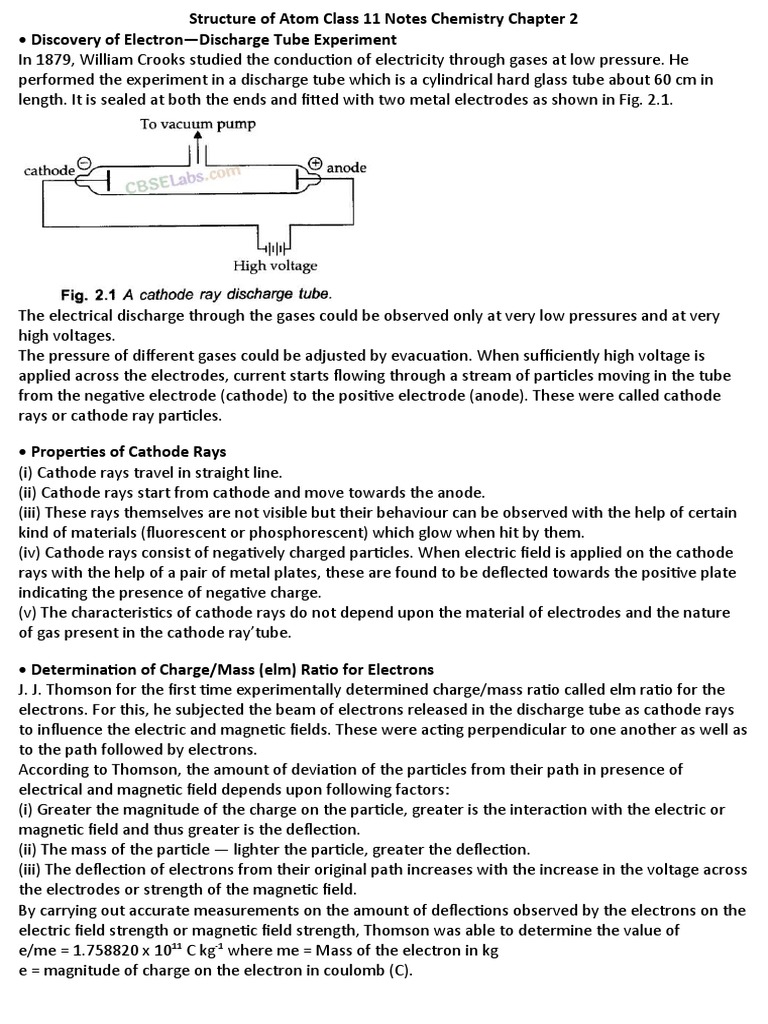When embarking on the journey of understanding the intricate world of chemistry, one frequently encounters the pivotal concept of atomic structure. For students in Class 11, this topic is not merely a subject to be studied; it embodies the foundation upon which advanced chemical principles build. As such, the question posed—should I skip the 11th structure of an atom?—is far from trivial. In contemplating this decision, an exploration of several key facets is warranted.
First and foremost, let us delve into the fundamental significance of atomic structure in the annals of chemistry. Atomic theory has been a cornerstone of scientific thought since antiquity, influencing theories ranging from Dalton’s early postulates to the modern quantum mechanical model. The structure of an atom, comprising protons, neutrons, and electrons, delineates the behavior and interactions of matter. Skipping this topic would mean bypassing an understanding of how these subatomic particles govern chemical reactions, bonding, and the physical properties of elements. Such knowledge is imperative not just for academic success, but for cultivating a comprehensive grasp of the material world.
Moreover, a thorough elucidation of atomic structure enables learners to appreciate the subsequent topics that follow in the chemistry curriculum, particularly those related to chemical bonding and the periodic table. For instance, understanding the arrangement of electrons in an atom is crucial for grasping how elements combine to form compounds. A superficial engagement with atomic structure may lead to significant gaps in comprehension as students attempt to navigate the complexities of molecular geometry and reactivity. Therefore, damaging the continuity of learning by neglecting this topic could result in cascading misunderstandings in related subjects.
Furthermore, the pedagogical approach to teaching atomic structure in Class 11 incorporates various experimental methodologies that enhance experiential learning. Concepts such as atomic mass, isotopes, and the quantum model are not mere theoretical constructs; they are often elucidated through hands-on experiences, such as Rutherford’s gold foil experiment or the application of spectroscopy. These practical exercises not only bolster theoretical understanding but also refine critical thinking skills and foster scientific reasoning. By engaging with atomic structure, students cultivate a mindset attuned to inquiry, experimentation, and innovation—qualities immensely valuable in any scientific discipline.
It is also prudent to consider the implications of skipping atomic structure on standardized assessments. Many competitive examinations require a foundational understanding of atomic theory, as it is integral to the design of such assessments. Failing to grasp this essential topic can lead to lower performance in quizzes, tests, and entrance examinations, which may have consequential effects on students’ academic careers. Thus, the potential short-term relief of bypassing this subject could culminate in long-term disadvantages, obstructing pathways to higher education and specialized fields.
Conversely, it is recognized that each learner possesses unique strengths, interests, and learning styles. Some students might find the study of atomic structure particularly challenging or disengaging. For those who struggle, alternative strategies can be considered rather than a complete omission of the topic. Supplemental learning resources, such as instructional videos, interactive simulations, and peer study groups, can significantly aid comprehension. Employing diverse pedagogical tools can transform an arduous subject into an engaging exploration, ultimately enhancing not just understanding, but also retention. Skipping the subject entirely, however, would preclude the opportunity for these enriching experiences.
In addition, one must contemplate the interdisciplinary nature of atomic structure. Principles derived from atomic theory permeate various fields beyond chemistry, including physics, biology, and environmental science. Understanding atomic structure enables students to grasp the interconnectedness of various scientific disciplines and consider real-world applications of chemical principles, such as material science and pharmacology. The ramifications of atomistic phenomena extend into technological advancements, thereby underscoring the necessity of a well-rounded education in science. By omitting this foundational topic, learners may inadvertently limit their understanding of complex systems, thereby precluding themselves from potential career opportunities in diverse scientific arenas.
Summarizing the overwrought implications of neglecting the study of 11th-grade atomic structure leads to the notion that skipping this critical topic is ill-advised. The profound effects of its omission reverberate throughout a student’s academic trajectory, influencing not only grades but also conceptual understanding and engagement with scientific inquiry. By taking the time to thoroughly explore atomic structure, students equip themselves with essential knowledge that serves as a beacon illuminating the vast expanse of chemistry and its myriad applications.
In conclusion, the deliberation surrounding the decision to skip the 11th structure of an atom should be weighed with caution. Embracing this foundational topic could very well determine future scholarly pursuits and foster a deeper understanding of the universe’s intrinsic workings. In the following lessons ahead—be they in organic chemistry, thermodynamics, or beyond—the principles of atomic structure will invariably resurface, reinforcing the concept that a robust foundation in chemistry is indispensable. Thus, the inquiry is not merely should one skip this subject, but rather how one can approach it with curiosity and dedication, ensuring a fruitful and expansive academic journey.












